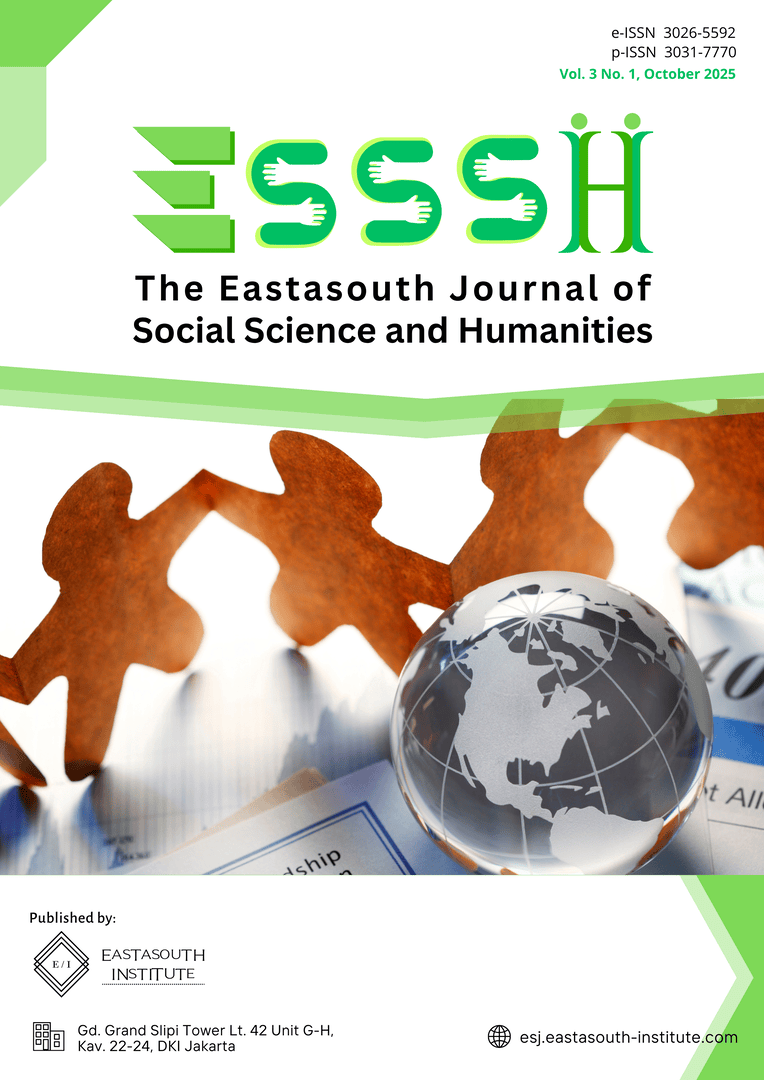Trends and Patterns in Political Communication Research: A Bibliometric Analysis of Scopus-Indexed Articles
Main Article Content
Abstract
This study delineates the global landscape of sustainopreneurship research from 2000 to 2025 by bibliometric analysis utilizing the Scopus and Web of Science databases. We used VOSviewer and Biblioshiny to look over 320 texts to find the intellectual, social, and conceptual frameworks of the topic. The results show that sustainopreneurship has grown into a field that combines sustainability, innovation, and entrepreneurship. Major research clusters focus on subjects including social innovation, sustainable development, the circular economy, and entrepreneurship education. Newer areas include digital entrepreneurship and using AI for sustainability. Collaboration networks show that India, the United States, China, Germany, and Spain are the biggest donors. This is made possible by strong institutional links across countries in Asia, Europe, and Africa. The research advances theoretical frameworks by establishing sustainopreneurship as a hybrid construct that integrates corporate innovation with sustainable development. It tells policymakers and educators about the latest trends in global collaboration and the most important areas for sustainable entrepreneurship education and investment.
Article Details

This work is licensed under a Creative Commons Attribution-ShareAlike 4.0 International License.
References
M. Vaughan, H. Theine, D. Schieferdecker, and N. Waitkus, “Communication about economic inequality: a systematic review,” Ann Int Commun Assoc, p. wlaf006, 2025.
H. Ashari and T. P. Nugrahanti, “Household economy challenges in fulfilling life needs during the Covid-19 pandemic,” Glob. Bus. Econ. Rev., vol. 25, no. 1, pp. 21–39, 2021.
F. P. J. Marques and E. Miola, “Key concepts, dilemmas, and trends in political communication: a literature review considering the Brazilian landscape,” Ann Int Commun Assoc, vol. 45, no. 2, pp. 95–112, 2021.
T. P. Nugrahanti and A. S. Jahja, “Audit judgment performance: The effect of performance incentives, obedience pressures and ethical perceptions,” J. Environ. Account. Manag., vol. 6, no. 3, pp. 225–234, 2018.
S. Stier, A. Bleier, H. Lietz, and M. Strohmaier, “Election campaigning on social media: Politicians, audiences, and the mediation of political communication on Facebook and Twitter,” in in Studying politics across media, Routledge, 2020, pp. 50–74.
T. P. Nugrahanti, S. Lysandra, and H. Ashari, “Auditor Work Environment and Professional Judgment in Audit: Evidence from Indonesia,” Australas. Accounting, Bus. Financ. J., vol. 18, no. 4, 2024.
A. Jungherr, G. Rivero, G. R. Rodríguez, and D. Gayo-Avello, “Retooling politics: How digital media are shaping democracy,” Cambridge Univ. Press, 2020.
H. Ashari, T. P. Nugrahanti, and B. J. Santoso, “The role of microfinance institutions during the COVID-19 pandemic,” Glob. Bus. Econ. Rev., vol. 30, no. 2, pp. 210–233, 2024.
J. G. Blumler and S. Coleman, “Democracy and the media—revisited,” Javnost-The Public, vol. 22, no. 2, pp. 111–128, 2015.
I. Agustina, H. Khuan, B. Aditi, S. A. Sitorus, and T. P. Nugrahanti, “Renewable energy mix enhancement: the power of foreign investment and green policies,” Int. J. Energy Econ. Policy, vol. 13, no. 6, pp. 370–380, 2023.
L. Muth and C. Peter, “Social media influencers’ role in shaping political opinions and actions of young audiences,” Media Commun., vol. 11, no. 3, pp. 164–174, 2023.
D. Subekti, D. Mutiarin, and A. Nurmandi, “Political communication in social media: A bibliometrics analysis,” Stud. Media Commun., vol. 11, no. 6, pp. 299–313, 2023.
G. Pennycook and D. G. Rand, “Lazy, not biased: Susceptibility to partisan fake news is better explained by lack of reasoning than by motivated reasoning,” Cognition, vol. 188, pp. 39–50, 2019.
G. Pennycook, J. McPhetres, Y. Zhang, J. G. Lu, and D. G. Rand, “Fighting COVID-19 misinformation on social media: Experimental evidence for a scalable accuracy-nudge intervention,” Psychol. Sci., vol. 31, no. 7, pp. 770–780, 2020.
K. M. Douglas et al., “Understanding conspiracy theories,” Polit. Psychol., vol. 40, pp. 3–35, 2019.
D. Romer and K. H. Jamieson, “Conspiracy theories as barriers to controlling the spread of COVID-19 in the US,” Soc. Sci. Med., vol. 263, p. 113356, 2020.
J. Khubchandani, S. Sharma, J. H. Price, M. J. Wiblishauser, M. Sharma, and F. J. Webb, “COVID-19 vaccination hesitancy in the United States: a rapid national assessment,” J. Community Health, vol. 46, no. 2, pp. 270–277, 2021.
C. Lin, P. Tu, and L. M. Beitsch, “Confidence and receptivity for COVID-19 vaccines: a rapid systematic review,” Vaccines, vol. 9, no. 1, p. 16, 2020.
C. Vaccari and A. Chadwick, “Deepfakes and disinformation: Exploring the impact of synthetic political video on deception, uncertainty, and trust in news,” Soc. media+ Soc., vol. 6, no. 1, p. 2056305120903408, 2020.
I. Franch-Pardo, B. M. Napoletano, F. Rosete-Verges, and L. Billa, “Spatial analysis and GIS in the study of COVID-19. A review.,” Sci. Total Environ., vol. 739, p. 140033, 2020.
G. Pennycook and D. G. Rand, “Lazy, not biased: Susceptibility to partisan fake news is better explained by lack of reasoning than by motivated reasoning,” Cognition, vol. 188, pp. 39–50, 2019.
G. Pennycook, J. McPhetres, Y. Zhang, J. G. Lu, and D. G. Rand, “Fighting COVID-19 misinformation on social media: Experimental evidence for a scalable accuracy-nudge intervention,” Psychol. Sci., vol. 31, no. 7, pp. 770–780, 2020.
K. M. Douglas et al., “Understanding conspiracy theories,” Polit. Psychol., vol. 40, pp. 3–35, 2019.
J. Khubchandani, S. Sharma, J. H. Price, M. J. Wiblishauser, M. Sharma, and F. J. Webb, “COVID-19 vaccination hesitancy in the United States: a rapid national assessment,” J. Community Health, vol. 46, no. 2, pp. 270–277, 2021.
D. Romer and K. H. Jamieson, “Conspiracy theories as barriers to controlling the spread of COVID-19 in the US,” Soc. Sci. Med., vol. 263, p. 113356, 2020.
D. W. Howe, What hath God wrought: The transformation of America, 1815-1848. Oxford University Press, 2007.
C. Vaccari and A. Chadwick, “Deepfakes and disinformation: Exploring the impact of synthetic political video on deception, uncertainty, and trust in news,” Soc. media+ Soc., vol. 6, no. 1, p. 2056305120903408, 2020.
I. Franch-Pardo, B. M. Napoletano, F. Rosete-Verges, and L. Billa, “Spatial analysis and GIS in the study of COVID-19. A review,” Sci. Total Environ., vol. 739, p. 140033, 2020.

